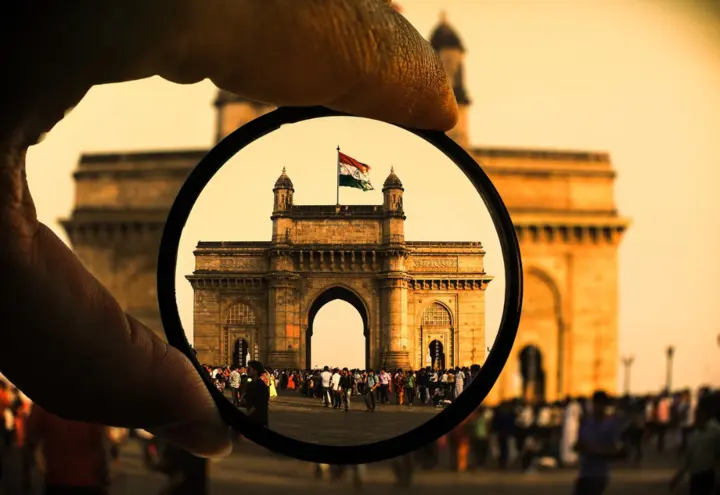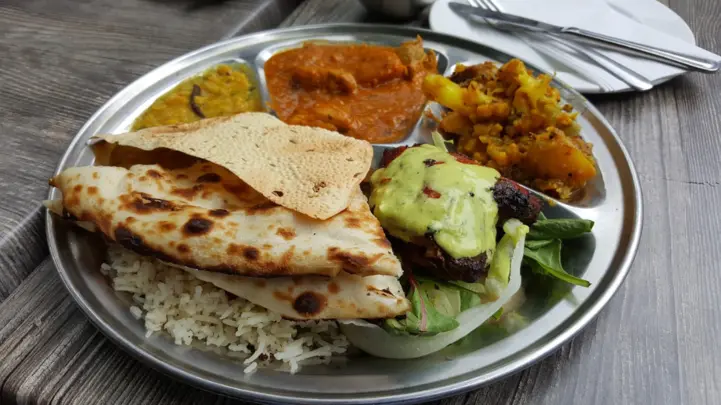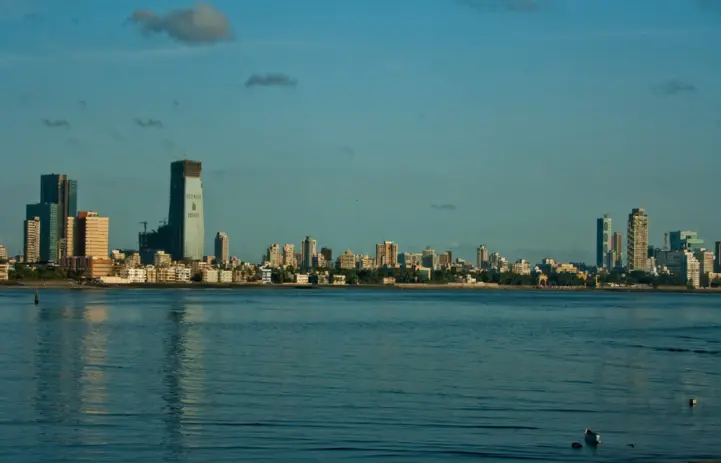Mumbai (Bombay): The City of One Million Dreams
Mumbai, often referred to as the "city of dreams", is a bustling city where ambitions meet opportunities. It is the financial and entertainment capital of India, attracting millions who come in search of a better life, careers in film, finance, or other industries. With its unique blend of cultures, history and uncompromising pace, Mumbai truly embodies the spirit of modern India. Let's explore the many facets of this vibrant city, from its historical past to its promising future.
Show key points
- Mumbai, located on India's west coast along the Arabian Sea, evolved from seven fishing islands into a major global metropolis with deep colonial roots.
- As India’s financial and entertainment capital, Mumbai drives the economy through institutions like the RBI, BSE, and Bollywood.
- The city’s population of over 20 million reflects a vibrant mix of cultures, languages, and ethnic backgrounds drawn by opportunity and ambition.
- ADVERTISEMENT
- Mumbai boasts a rich artistic life with institutions like Prithvi Theatre and NCPA, alongside street art and film festivals that showcase its cultural depth.
- Tourists are drawn to Mumbai's iconic landmarks such as the Gateway of India, Elephanta Caves, and Chhatrapati Shivaji Maharaj Terminus, as well as its dynamic markets.
- The city's diverse cuisine, from street food staples to high-end seafood, reflects the multicultural influences of its residents including Parsi, Gujarati, and Muslim communities.
- Mumbai’s contrasting landscape of luxury apartments and vast slums exemplifies its dual nature of prosperity and struggle existing side by side.
- With infrastructure projects like the Mumbai Metro and environmental initiatives, the city aims to evolve into a more sustainable and connected urban center.
1. Mumbai location and history.

Located on the west coast of India, Mumbai is the capital of Maharashtra and lies along the Arabian Sea. It consists of a group of seven islands, which were home to small fishing communities before becoming one of the world's largest cities. The islands were ceded to the British Crown in 1661 as part of the Catherine dowry of Braganza to King Charles II. Over time, the British developed Bombay into a major trading port, laying the foundation for its future as a trading hub. After independence, the city continued its rise as Mumbai, where its identity was firmly rooted in both the colonial heritage and the local culture.
Recommend
2. Mumbai residents.

Mumbai is one of the most densely populated cities in the world, with a population of over 20 million. As a melting pot of cultures, religions and ethnicities, the city's residents speak different languages, including Marathi (the official language), Hindi, Gujarati and English. People from all over India, even from abroad, migrate to Mumbai in pursuit of economic opportunity, making it a truly cosmopolitan city. The city's energy feeds on its people, from wealthy industrialists to working-class workers, all of which contribute to the vitality that makes Mumbai unique.
3. Economy of Mumbai.
Mumbai is India's main economic powerhouse, generating about 6% of the country's GDP. As the financial capital, it hosts the Bombay Stock Exchange (BSE), the Reserve Bank of India (RBI), and several multinational corporations and financial institutions. The city is also the heart of India's entertainment industry, with Bollywood producing more movies than any other city globally. In addition, Mumbai is home to the headquarters of several large conglomerates, such as Tata Group and Reliance Industries, making it a preferred destination for businessmen, investors and job seekers.
4. Cultural and artistic life in Mumbai.
Mumbai's cultural scene is as diverse as its residents. It is a city where traditional art forms coexist with modern experimental works. The city has a thriving theatre scene, with the famous Prithvi Theatre at its centre. The National Centre for the Performing Arts (NCPA) also plays a key role in promoting classical Indian music, dance and theatre. Mumbai hosts many film festivals, art exhibitions and cultural events that reflect its artistic richness. Moreover, the city's contemporary street art and galleries show how Mumbai embraced traditional and modern art forms.
5. Tourism in Mumbai.
Tourists flock to Mumbai to experience its historical and modern attractions. The Gate of India, a symbol of colonial history, stands tall along the coast, while Marine Drive offers stunning views of the city's skyline. The Elephanta Caves, a UNESCO World Heritage Site, offer a glimpse into ancient Indian architecture carved into the rock. Another UNESCO-listed landmark is Chhatrapati Shivaji Maharaj Terminus, showcasing Victorian Gothic architecture. Away from monuments, tourists can explore bustling local markets such as Crawford Market, the chic boutiques of Colaba, or the vibrant bazaars of Dharavi, one of Asia's largest slum and informal business hub.
6. Culinary traditions in Mumbai.

Mumbai's culinary scene is as diverse as its inhabitants, offering a mix of flavours from across India and the world. Street food is an integral part of the city's identity, with local favourites such as Vada Paf, Pav Paji and Pail Puri being a must-try. From fine dining to roadside kiosks, Mumbai offers something to suit every taste. The city's coastal location also makes seafood specialised, with dishes such as Pombel Fry and shrimp curry particularly popular. Moreover, the influence of the Parsi, Gujarati and Muslim communities is evident in the city's diverse culinary offerings, making it a foodie's paradise.
7. Mumbai's multiple faces.

Mumbai is a city of contrasts, where luxury skyscrapers sit side by side with sprawling slums, and where prosperity and poverty coexist side by side. South Mumbai is home to some of the country's wealthiest individuals, with its colonial-era buildings, upscale neighborhoods, and luxury shopping districts. By contrast, regions like Dharavi represent resilience and diligence for those living in less fortunate conditions. This duality is part of what gives Mumbai its unique character – a city that embodies hope and difficulties, ambition and struggle.
8. Future development in Mumbai.
As Mumbai continues to expand, city planners face the challenge of absorbing a growing population and improving infrastructure. Important projects such as the Mumbai Metro and Mumbai Trans Harbor Link aim to ease traffic congestion and improve connectivity. In addition, efforts are being made to address pressing environmental issues in the city, such as pollution and waste management. Plans to create green spaces, sustainable housing and improved public transport are integral to Mumbai's future as a more livable and environmentally friendly city.
The bottom line.

Mumbai, the city of a million dreams, is a living testament to India's diversity, resilience and dynamism. Its history is intertwined with that of the nation, and its present reflects the aspirations of millions. Whether it's the bustling financial district, Bollywood's glamour and charm, diverse cultural scene, or vibrant street life, Mumbai has something for everyone. Looking to the future, this ever-evolving city will undoubtedly continue to attract dreamers, providing them with a painting to paint their success and survival stories.








